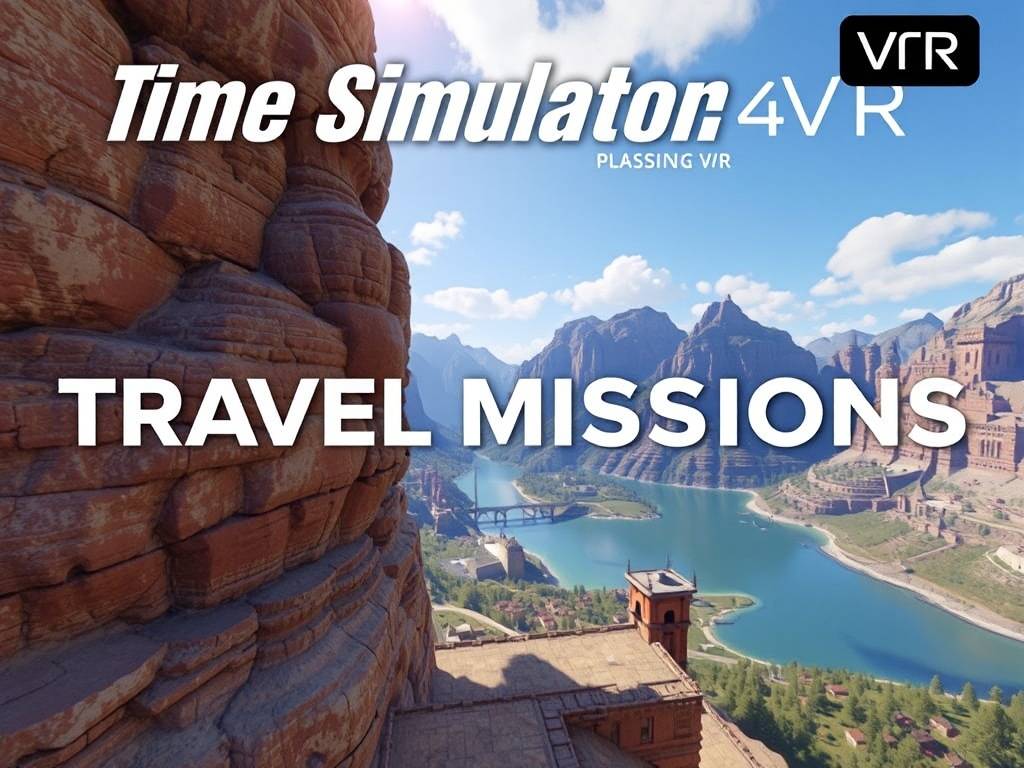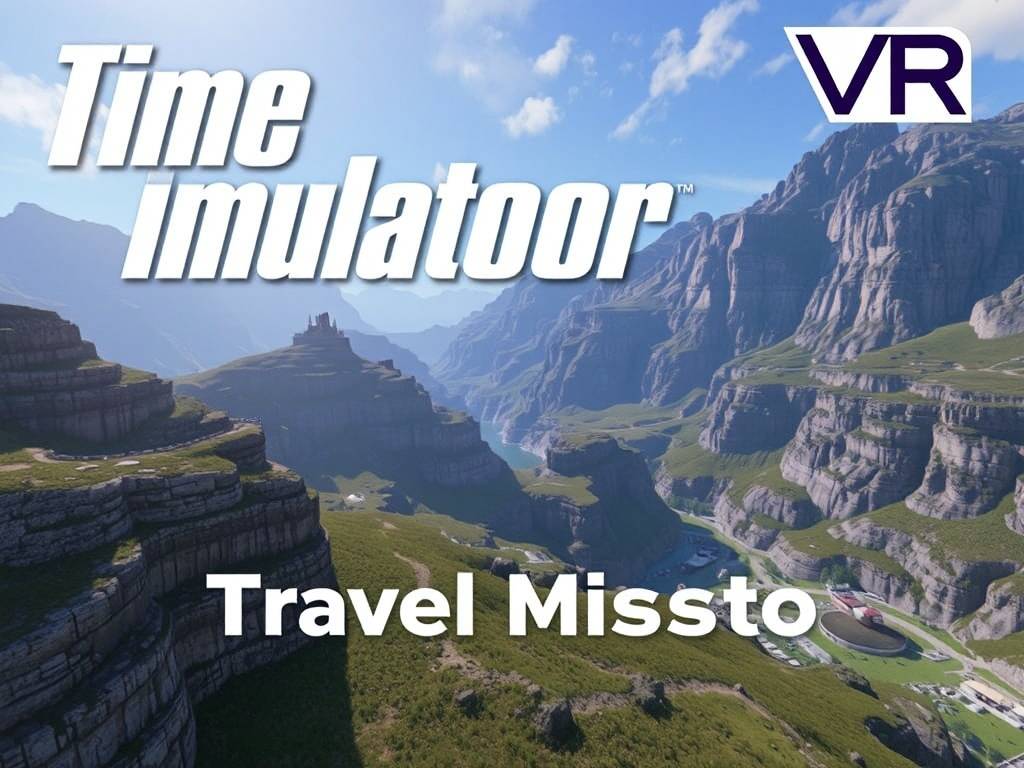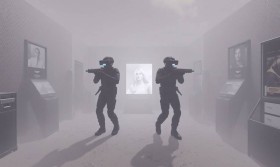Title: Beyond the Horizon: How Time Simulator VR's 'Travel Missions' DLC is Rewriting History and Ourselves
The initial promise of virtual reality was transportation—to fantastical worlds, the edges of space, or the heart of a digital battlefield. But Time Simulator VR took a more profound leap. It wasn't about going somewhere else, but somewhen else. Its core experience allowed us to witness history: standing silently on the deck of the Santa Maria, feeling the oppressive heat of a Cretaceous afternoon, or marveling at the silent, star-lit plains of antiquity. It was a museum of moments, breathtaking yet observational. A passive window into the past.
That window has now been flung open. The latest expansion, "Travel Missions," is not an addition; it's a transformation. It redefines the very purpose of the simulator, shifting the user from a ghostly spectator to an active, consequential agent within the timeline. This DLC doesn't just let you visit history; it tasks you with shaping it.

From Observation to Intervention: The Mechanics of Change
The genius of "Travel Missions" lies in its elegant yet complex mechanics. Upon loading the DLC, users are greeted by the "Chronos Directive," a sleek, in-world interface that presents a series of meticulously crafted missions. These aren't simple fetch quests or combat scenarios. They are delicate historical puzzles.
Each mission begins with a "Temporal Anomaly," a point in history where the recorded timeline has deviated from a calculated probability model. Your objective is not to impose a modern solution, but to gently nudge events back on their intended course. The tools at your disposal are subtlety and knowledge.
For example, one early mission, "The Messenger's Delay," places you in Paris during the tumultuous summer of 1789. A key revolutionary pamphlet, vital for unifying disparate factions, has failed to reach its intended printer due to a seemingly random street accident. Your mission isn't to fight guards or deliver the pamphlet yourself. Instead, you must identify the courier hours before the incident and create a minor distraction—a dropped crate of fruit, a strategically placed puddle—to alter his path by mere seconds, ensuring the pamphlet's safe arrival. The "Sync-O-Meter," a delicate HUD element, gauges your success, filling as the timeline corrects itself.
This approach creates unparalleled tension. You are an invisible sculptor, working with the clay of cause and effect. A too-forceful intervention risks creating a larger anomaly, leading to a "Desynchronization" and mission failure. The challenge is intellectual and ethical, not ballistic.

A Tapestry of Trials: The Missions Themselves
The DLC offers a diverse portfolio of missions spanning millennia, each designed to test a different aspect of your historical understanding and problem-solving skills.
- "The Librarian's Fire" (Library of Alexandria, 48 BCE): This mission is a race against the flames of war. Your goal is not to save the entire library—an impossible feat that would create a catastrophic paradox—but to ensure a specific, doomed manuscript on ancient mechanics is read by a young, impressionable scholar moments before its destruction, planting a seed of knowledge that will resurface centuries later.
- "Silent Signal" (Cold War, 1983): A high-stakes thriller set during the fraught Able Archer military exercise. A miscommunication has brought the world to the brink of nuclear war. Your mission is to infiltrate a Soviet communications bunker not as a spy, but as a phantom. Using the environment—shorting a radio with condensed breath, causing a fuse to blow—you must create a critical delay in a confirmation signal, allowing cooler heads to prevail.
- "The Apprentice's Hand" (Renaissance Florence): A beautiful mission focusing on art and legacy. A master sculptor’s most talented apprentice is on the verge of abandoning his craft due to a personal tragedy. Your intervention is one of emotional nuance: arranging for a lost sketchbook to be found, or ensuring a specific piece of music is heard at a moment of despair, rekindling the creative spark that will one day complete a masterpiece.
The Ripple Effect: Consequences and Narrative Depth
"Travel Missions" truly shines in its "Ripple Effect" system. Completing a primary mission is only the beginning. Returning to the Chronos Directive reveals secondary "Echo" missions that have unlocked in adjacent time periods, directly resulting from your actions.
Succeed in "The Messenger's Delay," and an "Echo" mission might appear in Napoleonic-era Egypt, where the ideals from that pamphlet have influenced an officer's decision. These follow-up missions are often more abstract, dealing with the diffusion of ideas rather than singular events. This creates a profound sense of accomplishment, allowing you to see the long, cascading impact of your subtle interventions. The timeline is presented not as a static line, but as a living, breathing web of interconnected stories, and you are now a weaver within it.
More Than a Game: The Philosophical Impact
Beyond the impeccable gameplay, "Travel Missions" forces a deep philosophical engagement. It makes the user acutely aware of the fragility of history. We are confronted with the idea that our present is built on a foundation of countless chance occurrences, near-misses, and forgotten actions. The DLC argues that history is not inevitable. It is a fragile, contingent narrative, and "Travel Missions" gives us the unique, terrifying, and exhilarating privilege of becoming its editors.
The Time Simulator VR: Travel Missions DLC is a landmark achievement. It has taken a groundbreaking platform and elevated it into a essential experience. It is a series of captivating puzzles, a thrilling collection of historical vignettes, and a profound commentary on causality itself. It is no longer just a simulator of time; it is a simulator of consequence, responsibility, and the delicate art of change. It doesn't just teach us about history; it makes us feel the weight of it, one carefully placed ripple at a time.


















